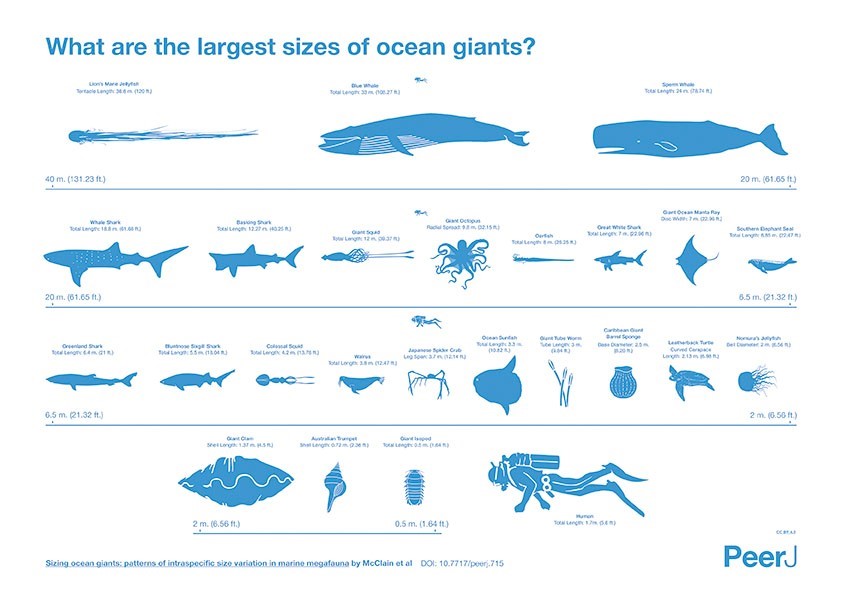The  Marine  Megafauna  Foundation  (MMF)  are  recognized  globally  for  developing  enduring conservation solutions from pioneering research on some of the world’s largest ocean giants, whale sharks  and  manta  rays.  Recently,  two  scientific  publications  they  have  lead-authored  and  one collaborative article, were listed in PeerJ’s Top 10 Marine Biology papers since the journals inception.
PeerJ is an open-access platform for scientists to publish and showcase their work. This collection of 10  articles  represents  some  of the  most  noteworthy  marine  biology  research,  which  PeerJ  has published up to September 2015. The list was compiled by examining a range of article level metrics – many of the publications are already highly cited, have been widely tweeted, and had a high number of page views.
As the most read article in PeerJ history, it seems size does matter.  World  scientists  teamed  up to analyze trends and review what is currently known about 25 of the ocean’s  largest  marine  species,  in  Sizing Ocean Giants.  Dr Andrea  Marshall,  Principal  Scientist  for MMF’s  Manta  Ray program,  contributed  information for the largest batoid, the giant manta ray, drawing on data obtained  from the several  locations  where their manta ray projects take place.
Also from the manta ray team, MMF researchers explored alternative methods to obtain DNA by collecting body surface mucus from wild manta rays, using a toothbrush  for  Evaluating  manta  ray mucus as an alternative DNA source for population genetics study. This study was the first example involving underwater collection of mucus by SCUBA divers and was shown to be an effective, low-cost option to traditional sampling techniques that could create opportunities to apply this method to other shark and ray species.
Utilizing other pioneering research techniques, the Marine Megafauna whale shark team  used paired- laser photogrammetry to improve size and demographic estimates for whale sharks, at two coastal aggregation sites in the Western Indian Ocean;  Tofo Beach in southern Mozambique and Mafia Island, Tanzania. Results of the population segregation by size and sex observed here and elsewhere, reinforces the need to determine the whereabouts of newborn sharks, immature female sharks, and mature sharks of both sexes to improve conservation and management for this globally threatened species.
“We are proud to have our papers recognized by PeerJ and pleased that our work resonated with the scientific community. As conservation biologists we strive to contribute information that will push the envelope on what we know about these vulnerable species so that we can better protect them. We look forward to continuing our groundbreaking research on these threatened ocean giants.â€
– Andrea Marshall MMF Co-Founder
The post Marine Megafauna Foundation Three-fold Success Press Release appeared first on Scuba Diver Life.


